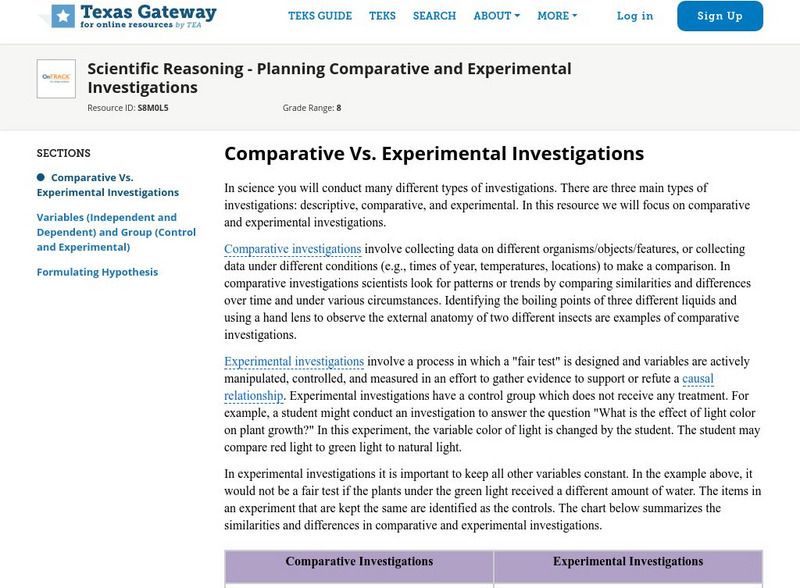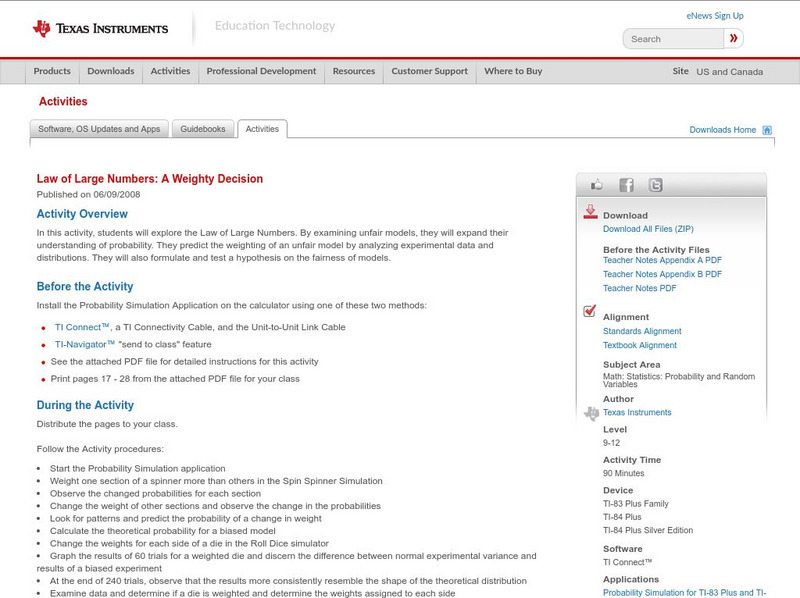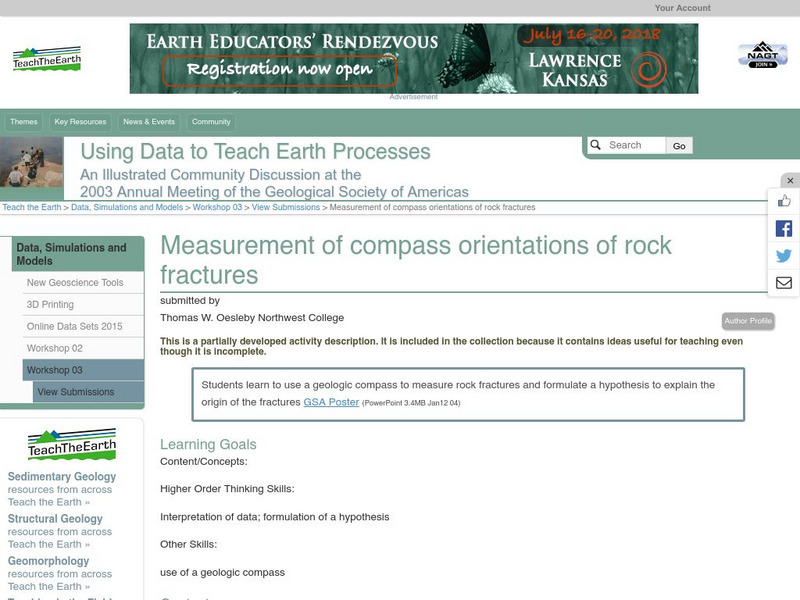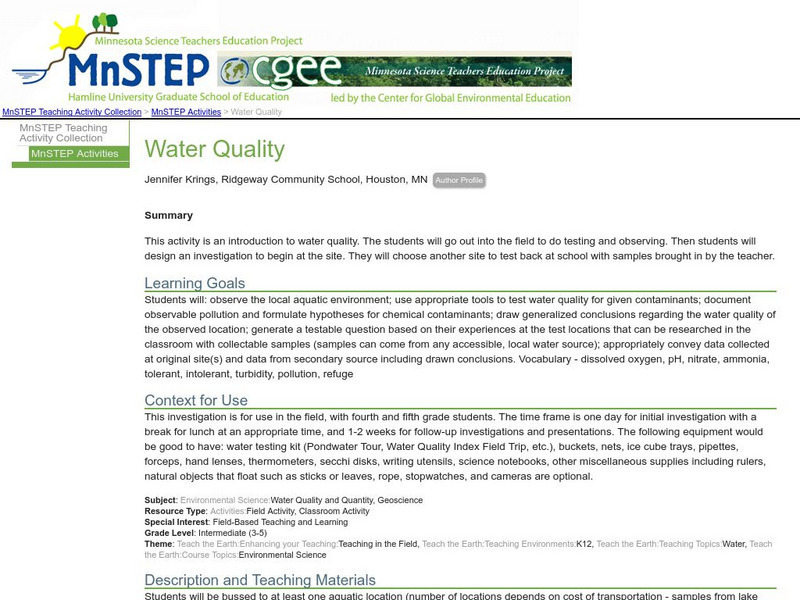TeachEngineering
Teach Engineering: Factors Affecting Friction
In this lesson, students use previous knowledge about friction to formulate hypotheses concerning the effects of weight and contact area on the amount of friction between two surfaces. In the Associated Activities (Does Weight Matter?...
Science Education Resource Center at Carleton College
Serc: Scientific Observation Activity
For this structured exercise, students are asked to observe the world around them and make an observation about any sort of process they see. They then ask a how or why question about their observation, and follow that by three or more...
Alabama Learning Exchange
Alex: Bloodstain Pattern Doesn't Lie
Students will formulate a hypothesis about the relationship (linear, direct, indirect, etc.) between the distance a drop of blood falls and the diameter of the splatter it makes. To test their hypothesis, the students will work...
Texas Education Agency
Texas Gateway: Scientific Reasoning Planning Investigations
Given scenarios of comparative and experimental investigations, students will plan and implement investigations by making observations and asking well-defined questions and formulating testable hypothesis.
NASA
Math Lesson Plan: Cyanobacteria Races: Cyanobacteria Motility [Pdf]
A comprehensive lesson plan about the movement of cyanobacteria includes a class experiment.
Texas Instruments
Texas Instruments: Law of Large Numbers: A Weighty Decision
In this activity, students will explore the Law of Large Numbers. By examining unfair models, they will expand their understanding of probability. They predict the weighting of an unfair model by analyzing experimental data and...
Science Education Resource Center at Carleton College
Serc: Measurement of Compass Orientations of Rock Fractures
In this field activity, students measure rock fractures with a geologic compass and formulate a hypothesis to explain the origin of the fractures.
Science Education Resource Center at Carleton College
Serc: Mn Step: Water Quality
After observing the local aquatic environment and testing the water quality, learners formulate a testable hypothesis. They next choose a second location, collect samples to bring to school, and test the water quality. Data is organized...




![Math Lesson Plan: Cyanobacteria Races: Cyanobacteria Motility [Pdf] Lesson Plan Math Lesson Plan: Cyanobacteria Races: Cyanobacteria Motility [Pdf] Lesson Plan](https://d15y2dacu3jp90.cloudfront.net/images/attachment_defaults/resource/large/FPO-knovation.png)


